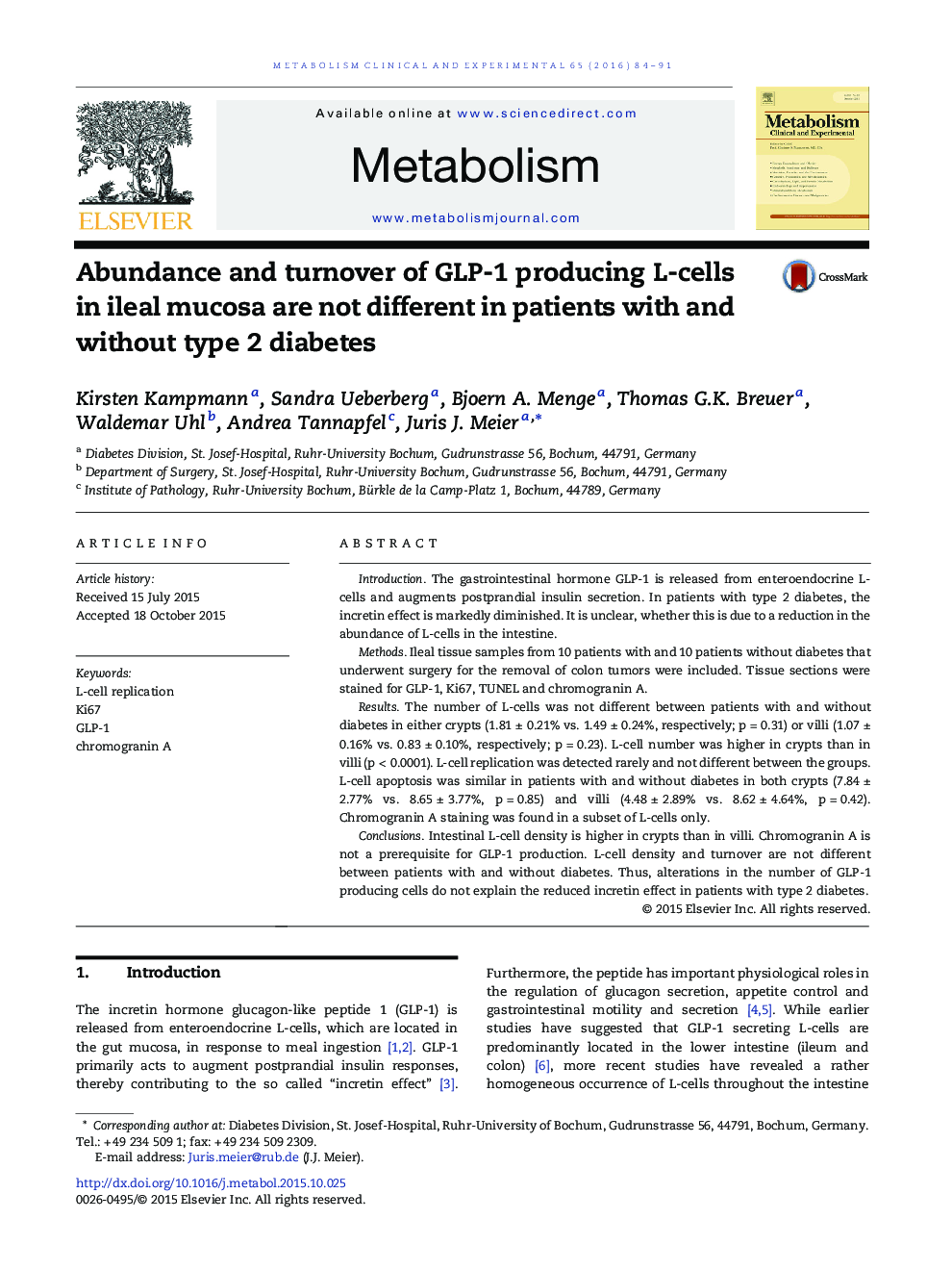| Article ID | Journal | Published Year | Pages | File Type |
|---|---|---|---|---|
| 5903031 | Metabolism | 2016 | 8 Pages |
IntroductionThe gastrointestinal hormone GLP-1 is released from enteroendocrine L-cells and augments postprandial insulin secretion. In patients with type 2 diabetes, the incretin effect is markedly diminished. It is unclear, whether this is due to a reduction in the abundance of L-cells in the intestine.MethodsIleal tissue samples from 10 patients with and 10 patients without diabetes that underwent surgery for the removal of colon tumors were included. Tissue sections were stained for GLP-1, Ki67, TUNEL and chromogranin A.ResultsThe number of L-cells was not different between patients with and without diabetes in either crypts (1.81 ± 0.21% vs. 1.49 ± 0.24%, respectively; p = 0.31) or villi (1.07 ± 0.16% vs. 0.83 ± 0.10%, respectively; p = 0.23). L-cell number was higher in crypts than in villi (p < 0.0001). L-cell replication was detected rarely and not different between the groups. L-cell apoptosis was similar in patients with and without diabetes in both crypts (7.84 ± 2.77% vs. 8.65 ± 3.77%, p = 0.85) and villi (4.48 ± 2.89% vs. 8.62 ± 4.64%, p = 0.42). Chromogranin A staining was found in a subset of L-cells only.ConclusionsIntestinal L-cell density is higher in crypts than in villi. Chromogranin A is not a prerequisite for GLP-1 production. L-cell density and turnover are not different between patients with and without diabetes. Thus, alterations in the number of GLP-1 producing cells do not explain the reduced incretin effect in patients with type 2 diabetes.
